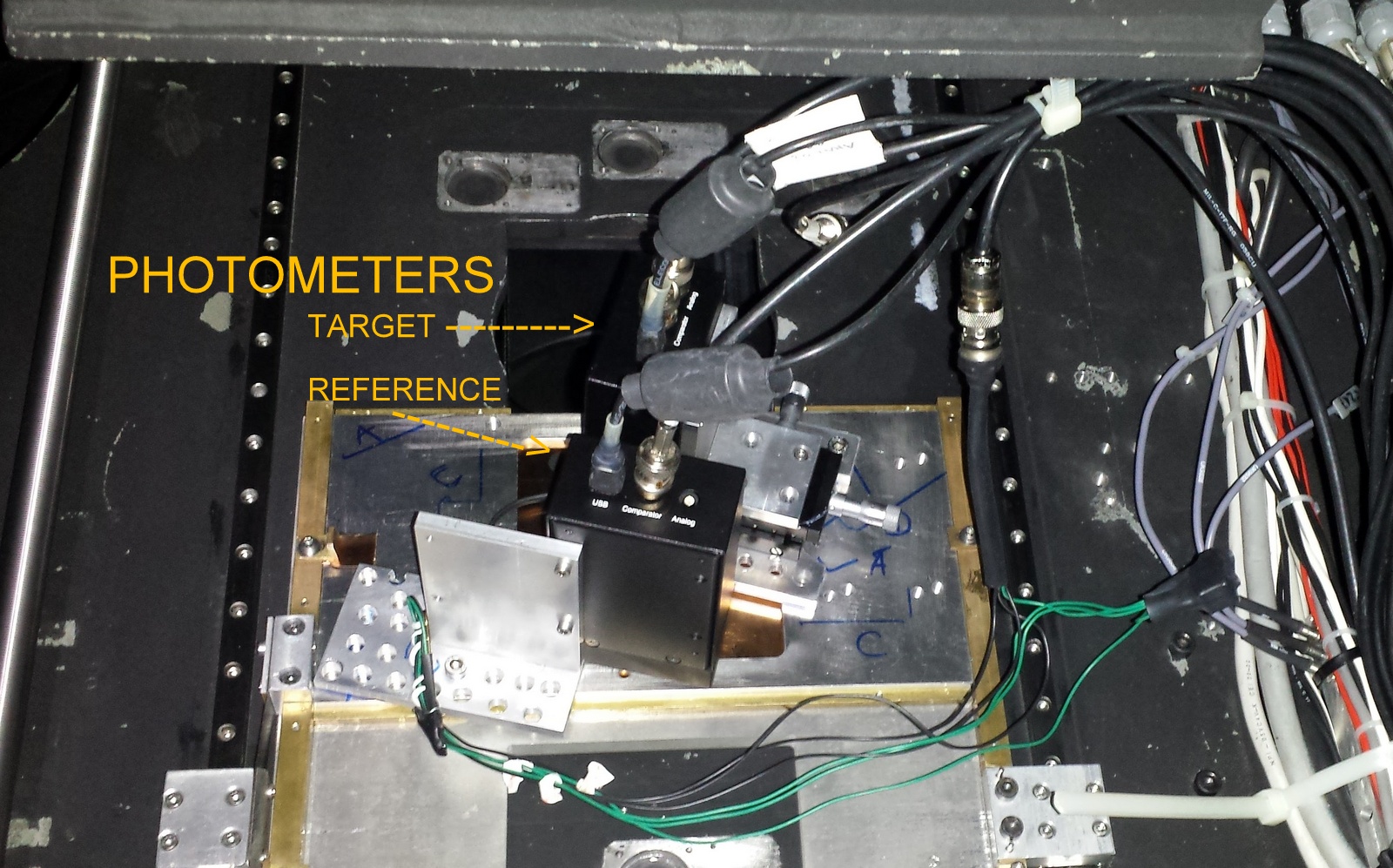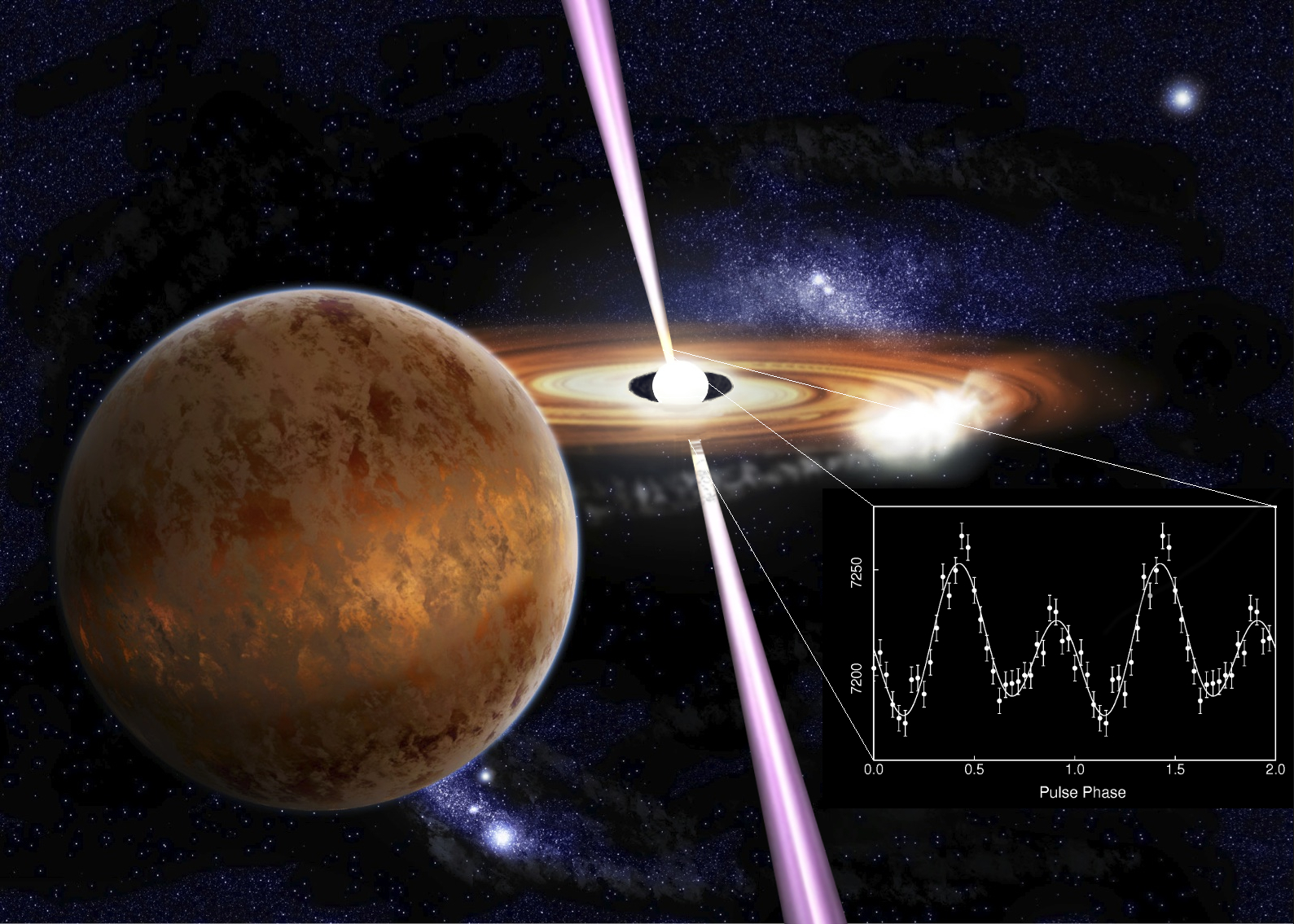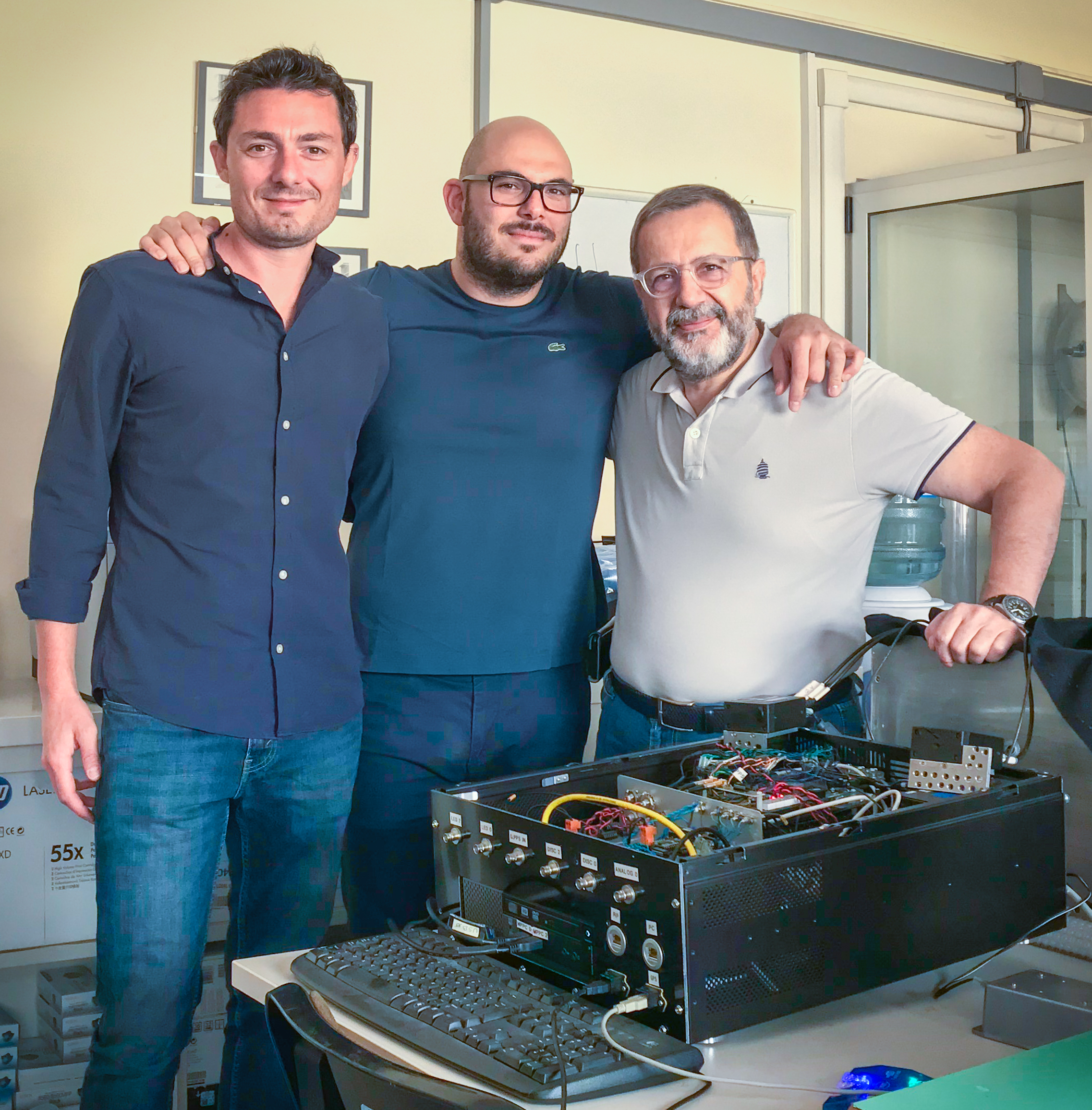Pulses of visible light from a millisecond pulsar
A team of researchers largely from INAF discovers a millisecond pulsar that emits periodic pulses not only in the X-ray band but also as visible light, thus behaving as an actual cosmic lighthouse.
A team of researchers has discovered that a millisecond pulsar, PSR J1023+0038, emits 590 pulses of visible light every second. It is the first optical millisecond pulsar ever discovered. This result has been recently published by Nature Astronomy and was obtained thanks to observations made at the INAF - Telescopio Nazionale Galileo in the Canary Islands, equipped with SiFAP, a high-temporal resolution optical photometer developed at the Department of Physics of the University of Rome La Sapienza.

Radio pulsars are neutron stars that behave as actual cosmic lighthouses. When the star rotates quickly enough, their strong magnetic fields are able to accelerate particle more intensely than what is possible with the largest particle accelerators developed so far, the Large Hadron Collider at Cern, Geneva. Every rotation of the star, electrons accelerated in this way produce pulses of radiation observed from the radio to the gamma-ray band, allowing us to measure the rotation period of the star with an extremely high precision.

Some pulsars have an extremely short spin period of a few milliseconds and rotate hundreds of times every around their axis. An object located at their equator would travel at an astonishing velocity of ten percent of the speed of light.
Millisecond pulsars achieve such an extreme rotational velocity during a previous evolutionary phase lasting billions of years, in which the neutron star tears off matter from a companion star and force it to fall on its surface through an accretion disk. During this evolutionary phase the neutron star emits a bright and possibly pulsed X-ray emission, and until a few years ago it was assumed that only after the mass transfer ceased altogether the pulsar could switch on as a radio pulsar.
However, in 2013 a team led by Alessandro Papitto, now at INAF-Astronomical Observatory of Rome with an EU funded Marie Skłodowska Curie fellowship, has discovered that some millisecond pulsars (dubbed transitional) were able to switch in less than a few weeks between an accreting X-ray pulsar regime and a radio pulsar state powered by the rotational kinetic energy of the star. The behavior of these pulsars when they have an accretion disk turned out to be a true enigma. Their variable emission is halfway between what is usually seen from accreting neutron stars and the behavior of radio pulsars, something that has never been observed before.
To solve this puzzle, a team of researchers led by Filippo Ambrosino (INAF IAPS Roma) and Alessandro Papitto employed the Silicon Fast Astronomical Photometer. This instrument was conceived and developed by the group led by prof. Franco Meddi at the Department of Physics of The University of Rome – Sapienza and is able to tag the time of arrival of individual optical photons with a precision of 25 nanoseconds (equal to 25 thousand-millionth of a second). The instrument was shipped to the Telescopio Nazionale Galileo in La Palma (Canary Islands), and there specially modified by the TNG staff under the supervision of Adriano Ghedina, to be mounted at the Nasmyth B focus to study the optical emission of a transitional millisecond pulsar. As explained by Adriano Ghedina: "SIFAP is a visiting instrument easily mounted at the focal plane of the telescope. We use a properly modified MOS mask support to mount and align both the target and the reference detectors on the star field."

“Observing a transitional millisecond pulsar with SiFAP during a phase characterized by the presence of an accretion disk allowed us to detect coherent pulses of visible light, something that was never observed from a millisecond pulsar,” says Alessandro Papitto. “It is a behavior that resembles radio pulsars, but it was observed when the pulsar was surrounded by an accretion disk”.
“This crucial discovery shows that also the magnetic field of a rapidly rotating neutron star is able to produce pulses of visible light, a brand new phenomenon,” says Filippo Ambrosino. “Furthermore, it suggests that a radio pulsar is active even when an accretion disk is present. This unexpected result could possibly lead researchers to revise many of the usual assumptions about the interaction between accretion disks and pulsar magnetic fields.” The first discovery of optical pulsations from a millisecond pulsars certainly boosted the motivation of the entire team of researchers to keep on their pioneering study of optical millisecond pulsars, exploiting the Telescopio Nazionale Galileo – SiFAP winning pair.
Read the article “Optical pulsations from a transitional millisecond pulsar“, by F. Ambrosino, A. Papitto, L. Stella, F. Meddi, P. Cretaro, L. Burderi, T. Di Salvo, G. L. Israel, A. Ghedina, L. Di Fabrizio e L. Riverol published by Nature Astronomy and arXiv.

